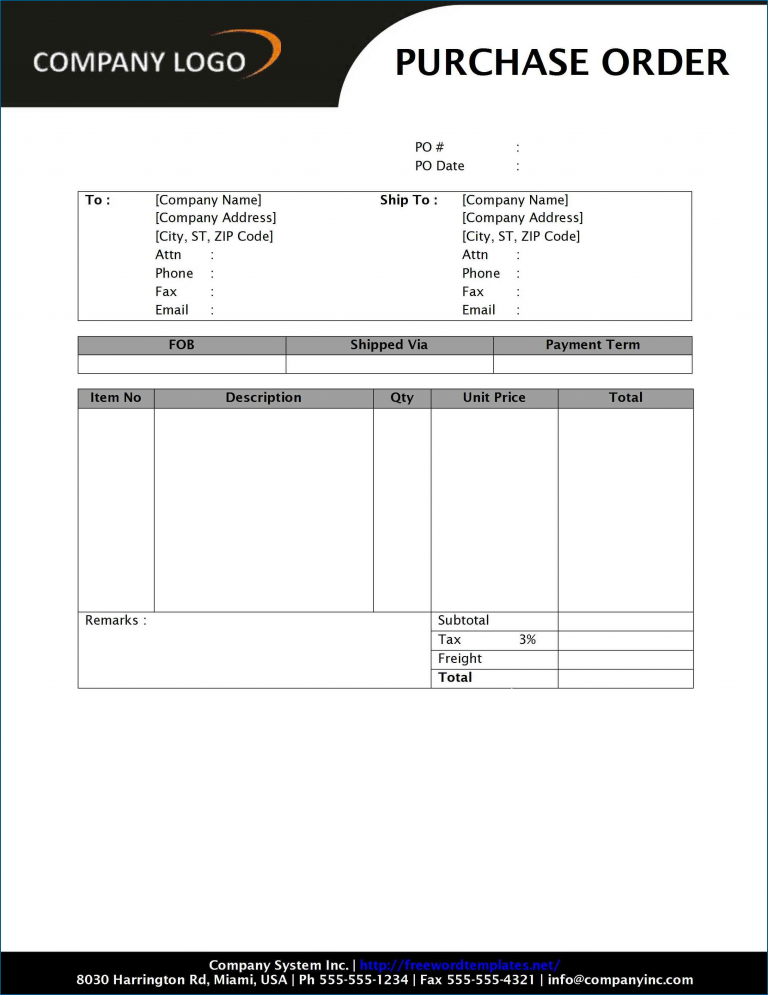A purchase order is a valuable tool for businesses to document and track incoming orders and expenses for different departments. It plays a crucial role in helping the purchasing and finance departments keep an eye on how much money is being spent, when it is being spent, and what it is being spent on.
In this article, we will explore the importance of using purchase orders, how to create them, and provide tips for successful implementation.
What is a Purchase Order?
A purchase order is a document that serves as a record of the goods or services that a business intends to purchase from a vendor or supplier. It includes important details such as the item description, quantity, price, delivery date, and payment terms. This document is typically generated by the purchasing department and sent to the vendor to initiate the procurement process.
The purchase order is an essential tool for businesses to maintain control over their purchasing activities. It helps in tracking and documenting each purchase, ensuring that the right items are ordered, and the correct amounts are paid. By using purchase orders, businesses can streamline their procurement process, avoid disputes with vendors, and maintain accurate records of their expenses.
Why are Purchase Orders Important?
purchase orders are important for several reasons:
- Tracking Expenses: By using purchase orders, businesses can easily track their expenses and identify any discrepancies in their budget. This helps in managing cash flow and ensuring that money is being spent wisely.
- Documentation: Purchase orders serve as a legal document that provides proof of the agreement between the buyer and the seller. It helps in resolving any disputes that may arise regarding the quantity, quality, or price of the goods or services purchased.
- Audit Trail: Purchase orders create an audit trail that allows businesses to review their purchasing activities and identify any irregularities or inefficiencies. This helps in improving the procurement process and reducing costs.
- Inventory Management: By tracking incoming orders through purchase orders, businesses can better manage their inventory levels. This ensures that they have the right amount of stock on hand to meet customer demands without incurring unnecessary costs.
How to Create a Purchase Order
Creating a purchase order is a straightforward process.
Here are the steps to follow:
- Identify the Vendor: Start by identifying the vendor or supplier from whom you plan to purchase the goods or services.
- Gather the Necessary Information: Collect all the necessary information, such as the item description, quantity, price, delivery date, and payment terms.
- Choose a Template: Select a purchase order template that meets your business needs. There are various templates available online that you can customize to fit your requirements.
- Fill in the Details: Enter all the required details into the template, ensuring accuracy and completeness.
- Review and Approve: Review the completed purchase order for any errors or omissions. Once satisfied, approve the purchase order and send it to the vendor.
By following these steps, you can create a professional and accurate purchase order that will help you effectively manage your purchasing activities.
Examples




Tips for Successful Purchase Order Management
To ensure successful management of purchase orders, consider the following tips:
- Use a Consistent Format: Establish a standardized format for your purchase orders to maintain consistency and make it easier for your team and vendors to understand and process them.
- Include Detailed Descriptions: Provide clear and detailed descriptions of the items being purchased to avoid any confusion or misunderstandings.
- Keep Records Organized: Maintain a centralized system for storing and organizing your purchase orders for easy retrieval and reference.
- Regularly Review and Update: Review your purchase order process periodically to identify any areas for improvement and update your templates or procedures accordingly.
- Train Employees: Provide training to your employees on how to create, process, and track purchase orders to ensure consistency and accuracy.
By following these tips, you can effectively manage your purchase orders and improve your overall procurement process.
Conclusion
A purchase order is a valuable tool for businesses to track and document incoming orders and expenses for different departments. It helps the purchasing and finance departments keep track of how much money is being spent, when it is being spent, and what it is being spent on.
By using purchase orders, businesses can streamline their procurement process, maintain accurate records, and ensure that their expenses are managed efficiently. Implementing these best practices will contribute to successful purchase order management and ultimately benefit the overall financial health of the business.
Purchase Order Template – Download
